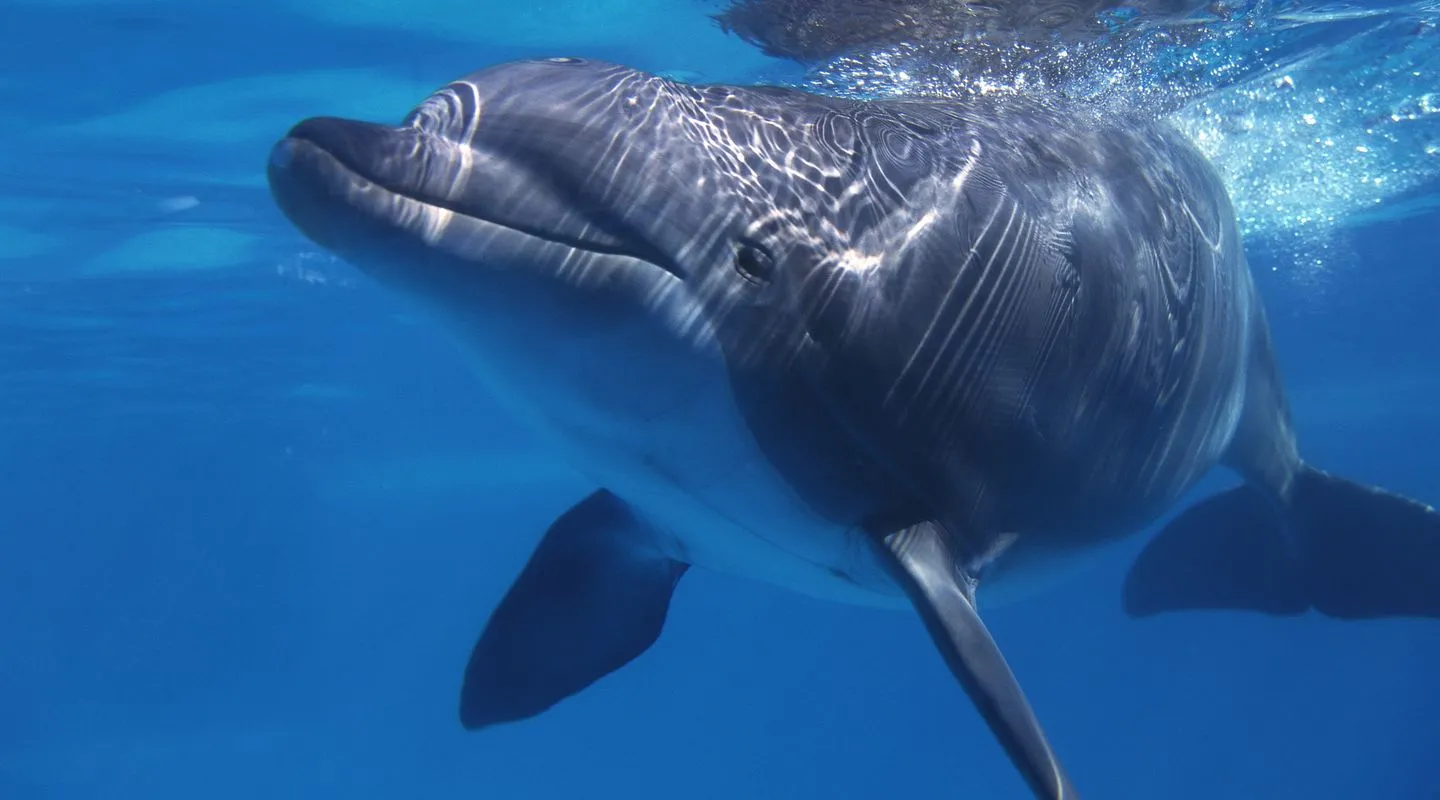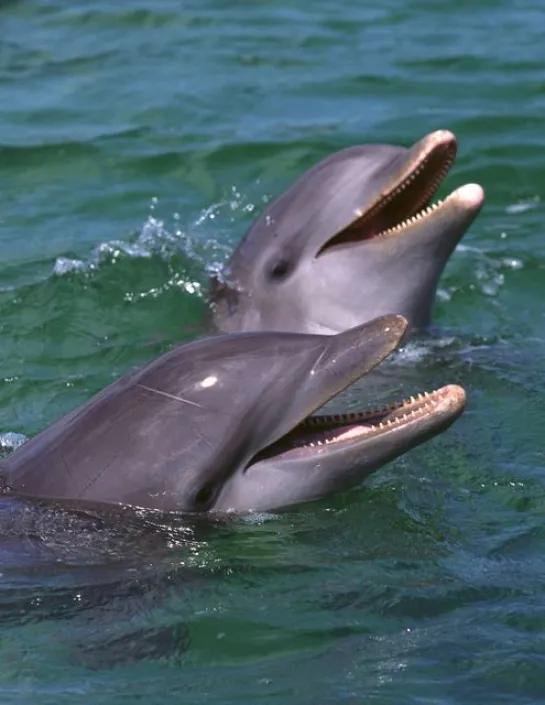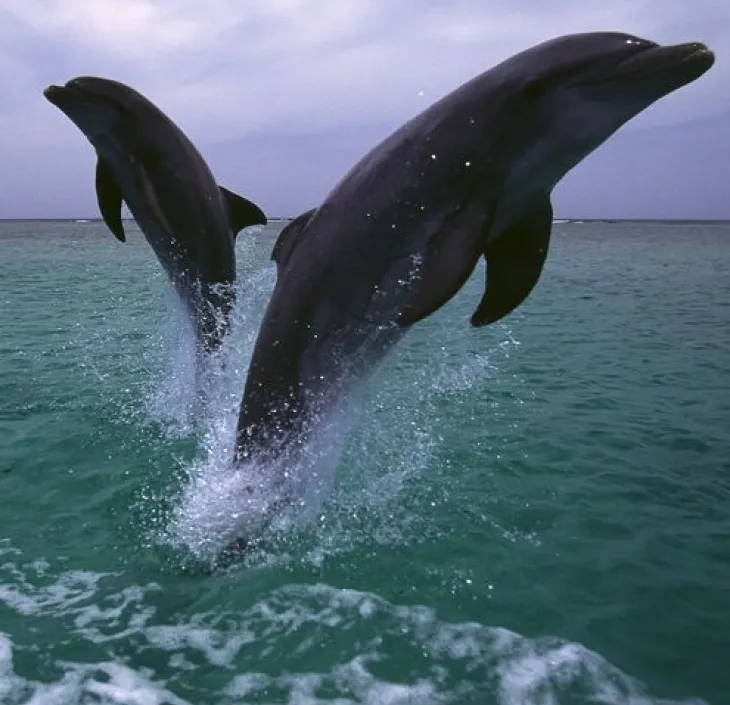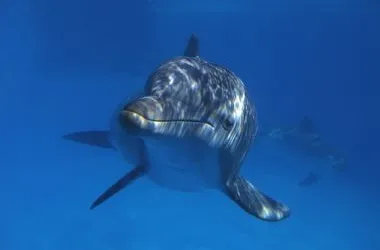VIRTUAL ANIMAL IN AUGMENTED REALITY
The bottlenose dolphin is one of the impressive figures that you will be able to discover in the Grand Large experience.

Virtual animals
VIRTUAL ANIMAL IN AUGMENTED REALITY
The bottlenose dolphin is one of the impressive figures that you will be able to discover in the Grand Large experience.

Identity card
appendix II
Atlantic Ocean, Indo-Pacific and Mediterranean and Black Sea. Tropical to temperate.
Coastal waters and open sea.
2,5 to 3 m
Fish (sardines, anchovies, mullets, mackerel, etc.), sometimes squid
In France it benefits from a special protective measure.

It owes its ‘blower’ name to the noise it makes when it expels air out of its blowhole.
The bottlenose dolphin Tursiops truncatus – also called dauphin souffleur (blower dolphin) or dauphin gros nez (large-nosed dolphin) in French – is one of the best-known dolphin species. Indeed, this marine mammal from the Delphinidae family was often seen in captivity in the 1960s, and the American TV series « Flipper the Dolphin » made a veritable star of this cetacean.
The bottlenose dolphin is a coastal animal, that can also be seen in rivers and estuaries. In tropical waters, groups bringing together around twenty individuals can live in the open sea. This species can be found in all of the world’s temperate and tropical seas: the Caribbean, North-West Atlantic, French Mediterranean, North-East Atlantic, English Channel, North Sea, and the Red Sea.
Bottlenose dolphins are often seen swimming in the wake of ships’ bow waves, which allows them to advance faster with less effort.
Human activities on the high seas – shipping in particular – can have a negative impact on dolphins. This is because the sound pollution caused by passing ships can upset these marine mammals’ behaviour and the functioning of their sonar.
In France it benefits from a special protective measure: Order of 27 July 1995 establishing the list of marine mammals protected on the national territory.
journey on the high seas

Augmented-reality animals
The Ocean Mag
In the spotlight
Found in all the world's seas, the jellyfish intrigues and fascinates. But watch out, you might get burnt !

Article
On 15 July, 40 juvenile Atlantic lookdowns, born thanks to the partnership between Nausicaá and BioNaMeris, will be sent to La Rochelle.
Article
In order to breed, the male Banggaï cardinalfish recovers the fertilised eggs and stores them in its mouth until they hatch.